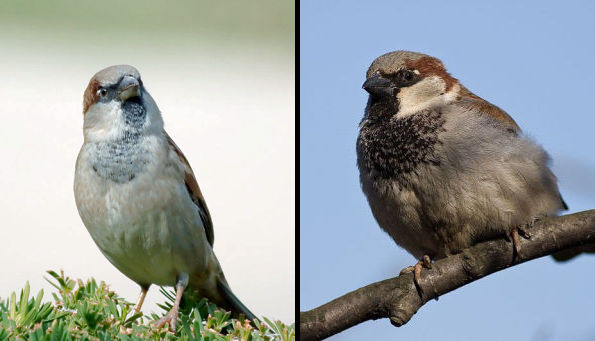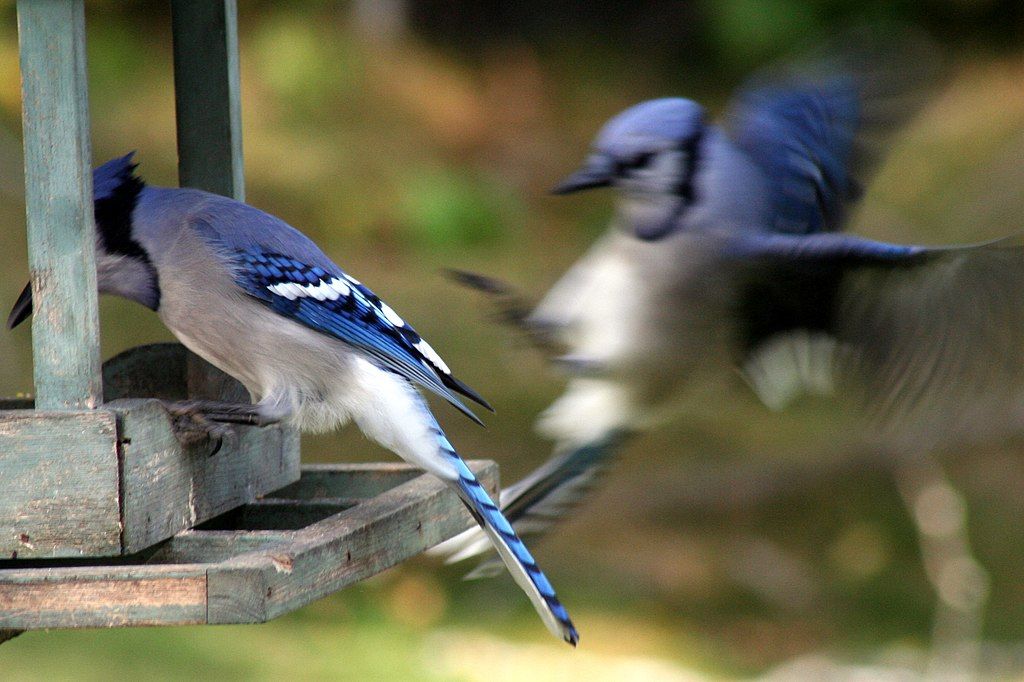
14 January 2011
If you watch birds at your feeder for a while you see that some birds are dominant over others. Expressed in behavior and outward appearance, dominance can be a species trait (blue jay) or an individual trait (the male cardinal that wins every contest). The individuals in charge tend to be physically larger than their subordinates and have brighter or better plumage.
Male house sparrows can tell who’s in charge just by looking at each other. Their dark bibs are a “badge of status” at all times of year. The bigger and darker the bib, the more dominant the bird.
In a contest between the two birds pictured above, the one on the left would not attempt to challenge the one on the right. “Mr. Big Bib” wins whenever he shows his chest.
Unevenly matched birds (very pale and very dark) are unlikely to fight but males with similar badge size fight often, especially in early spring because it’s not obvious who’s in charge. Eventually the contests work themselves out and everyone knows his place.
Blue jays avoid contests altogether by observing other’s behavior.

For instance, two blue jays, Charlie and Bob, have already determined that Bob outranks Charlie. One day Arnold shows up. Charlie watches from a distance as Arnold dominates Bob so Charlie learns, without getting close to Arnold, that Arnold is dominant over him. This saves Charlie a lot of trouble.
It almost sounds human. 😉
(photos from Wikimedia Commons)
funny. i have been thinking about house sparrows recently. i am going to bike the katy trail in missouri this spring and realized that the eurasian tree sparrow was the bird to look for in st. louis. i began to wonder why the transplanted house sparrow did so well readily expanding its range while the eurasian tree sparrow only established itself locally. my thoughts turned to the relatively aggressive nature of the house sparrow as a species. i guessed that the eurasian tree sparrow was less so. found this informative entry online:
http://mdc.mo.gov/conmag/2003/05/eurasian-tree-sparrow
How do these birds know, without looking in a mirror, that they are dominant? How do they know they have a darker coloured beard or chest? Is it only in how other birds react to them? If that is the case, then how do the less dominant ones know they don’t have a dark coloured chest or beard? I might be asking dumb questions, but I hope not.
I don’t know how the correlation works in house sparrows but here’s a human example: Powerfully built tall men are deferred to by everyone else in the room. Even if not overt, people move out of their way. Male house sparrow color might work in a similar fashion.